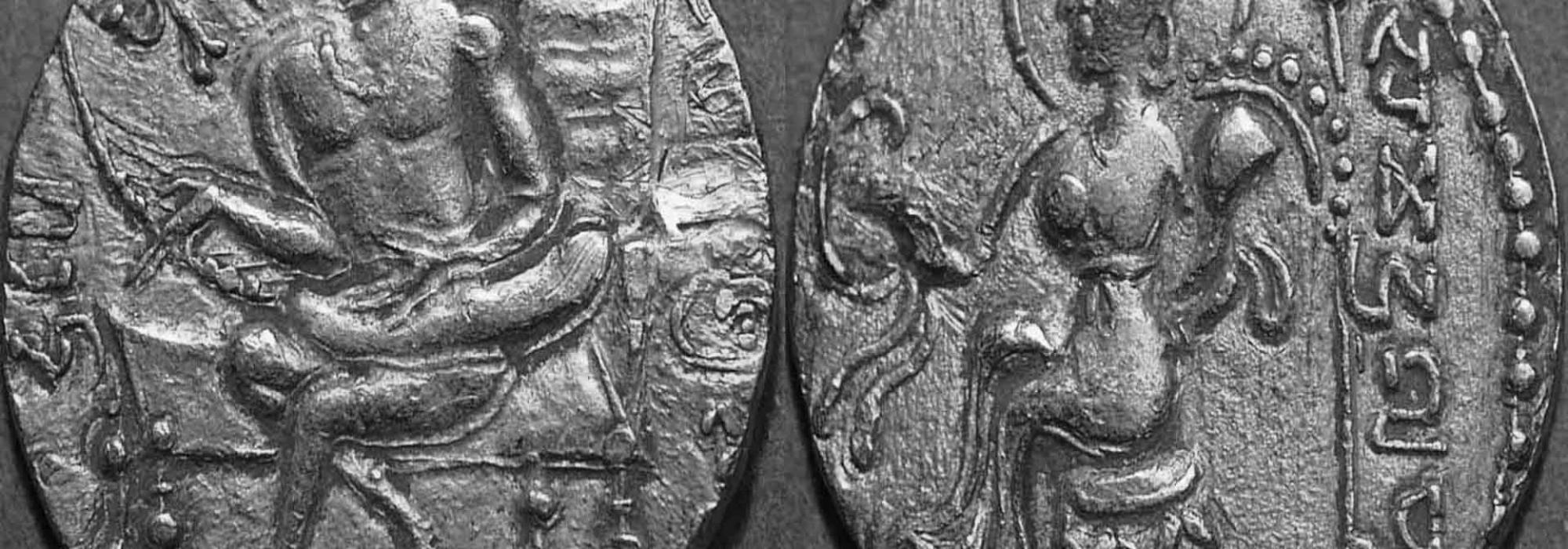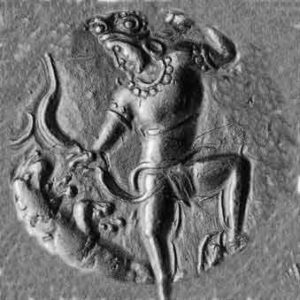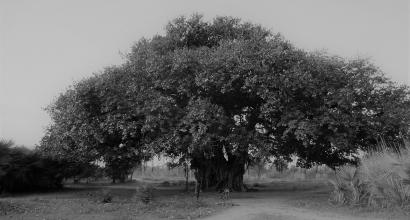Samudragupta had a wife named Dattadevi. Ramagupta and Chandragupta Vikramaditya were their sons. We are fortunate to know their names and other details from the coins that were minted in that era. A great economic, cultural, and social revolution took place in the Gupta Age. We can see in history how the span, the vastness, and the kṣātra (of the Gupta Age) protected people in all stages of life, from all walks of life.
A few accuse Samudragupta and Chandragupta Vikramaditya of having offensively attacked Gaṇa-tantra (the system of Republics). They further accuse Samudragupta and Chandragupta Vikramaditya—who were children of the Licchavi gaṇa—of annihilating not just the Licchavi gaṇa but also the Yaudheya gaṇa, Madra gaṇa, Mālava gaṇa, and others.
Rahul Sankrityayan has, at the end of his novel Jaya Yaudheya, written a chapter titled ‘Kālidāsa.’ He admires Kālidāsa as a poet. But in that chapter, a chief of the Yaudheya gaṇa named Jaya hurls an accusation at Kālidāsa, “You have written about everything in your Meghadūta. Although your megha travels above our Yaudheya gaṇa, you have not even mentioned it.” These are merely products of personal bias and hatred, nothing else. Kālidāsa has described in detail only his own region, namely. Vidarbha, and then has quickly taken the story forward. This is not some evil political game.
The Qualities and Shortcomings of the System of Republics
The major intrinsic loophole of the system of republics is that each and every citizen has to be vigilant day and night. That is extremely difficult. We may call democracy as constant vigilance. One aspect of that is the system of republics. However, a republic is not a pure democracy. Only a few heads of the republic and officials have the right to śalākagrahaṇa; in modern parlance, it refers to the right to vote.
The assembly of the republic was called the Saṃsthāgāra (Saṃthāgāra in Pali). All the members of that assembly were people from important clans and families. If they all had to get together (‘saṃnipāta’), discuss or debate any issue, and finally take a decision, they had to undertake śalākagrahaṇa. They had to pick red and black pieces of wood. Red was for an ‘aye’ and black for a ‘nay.’ If one had both agreement and opposition to the topic at hand, then he was to take both red and black. If one had neither, he was to take neither red nor black. Based on the number of wood pieces (śalākas) that each person had taken and the persons who had taken both, the calculations were made and the decision was taken. In these assemblies, there would be both male and female servants present. Also, there were several people who did not have the authority to participate in saṃnipāta [that is, they did not have voting rights].
All this shows an ancient form of democratic establishment. Even so, we find that it was difficult for people of varied opinions to co-exist in unity. Instead of trying to teach a hundred wastrels, it is better to teach one pupil who is intelligent and diligent. If there is a king who is endowed with viveka (wisdom), under his regime, there is a chance that several wastrels will be driven to lead lives of discipline and a sense of structure will be infused in the society. The republics being inward looking and limited to their own geographical and cultural boundaries, refused to mix with others due to their arrogance and ostentatiousness. It is due to this reason that during the time of Alexander’s march of invasion, all the republics crumbled and were rendered useless.
In that period, it was in Western India where the system of republics was abundant. In the east, there were only a few republics, outside of the Magadhan empire. Western India had republics like Gāndhāra, Takṣaśila, Mālava, etc. Kauṭilya had clearly identified that the system of republics was not a robust political model. It worked fine only when there are no foreign invasions, no barbaric assaults from alien lands. It would also work well perhaps, if the wars were fought within the framework of Sanatana Dharma and its code of ethics. We see an ancient system of republics in the Vedas. The reason those ancient republics were able to survive for a fair amount of time was because there were no foreign invasions or barbaric attacks by people who had no respect for dharma.
What is to be done when the foreigners invaded the land without paying any heed to dharma or ethics or rules of combat? For that matter, even when various kingdoms and empires were ruling our country, all our war strategies and political calculations were rendered useless during the Islamic invasions. A K Warder, in his magnum-opus Indian Kavya Literature spanning several volumes says this when writing about Viśākadatta’s Mudrārākṣasa – As long as India adhered to the precepts of Chanakya, it was able to steadfastly hold on to its freedom, culture, and honour. But when India followed the path of chivalry without sagacity and magnanimity without discretion it succumbed to the barbaric invasions of Islam and suffered for centuries.
Will Durant shares a similar sentiment in his Story of Civilization when he says that only those who value the law should speak in matters of law and justice. What is the use of taking to a lawbook to one who pays scant respect to the law? "Yasya pramāṇaṃ na bhavet pramāṇaṃ kasya kuryāt vacanaṃ pramāṇam." In other words, trade is possible only in a place where law and order is in place, where business ethics are followed, and where people speak a language everyone understands. What can be achieved with a person who doesn't understand our language? One has to look for some other language in order to communicate. Then this language of morals and ethics will not suffice; the language of ruthlessness becomes imperative. The daṇḍanīti of the Mahābhārata spells it out in clear words: "Māyāvī māyayā vadhyaḥ" (An illusionist is destroyed by illusion). These are the words that Krishna says during the episode of Duryodhana's killing.
Translated by Hari Ravikumar and Sandeep Balakrishna
















































